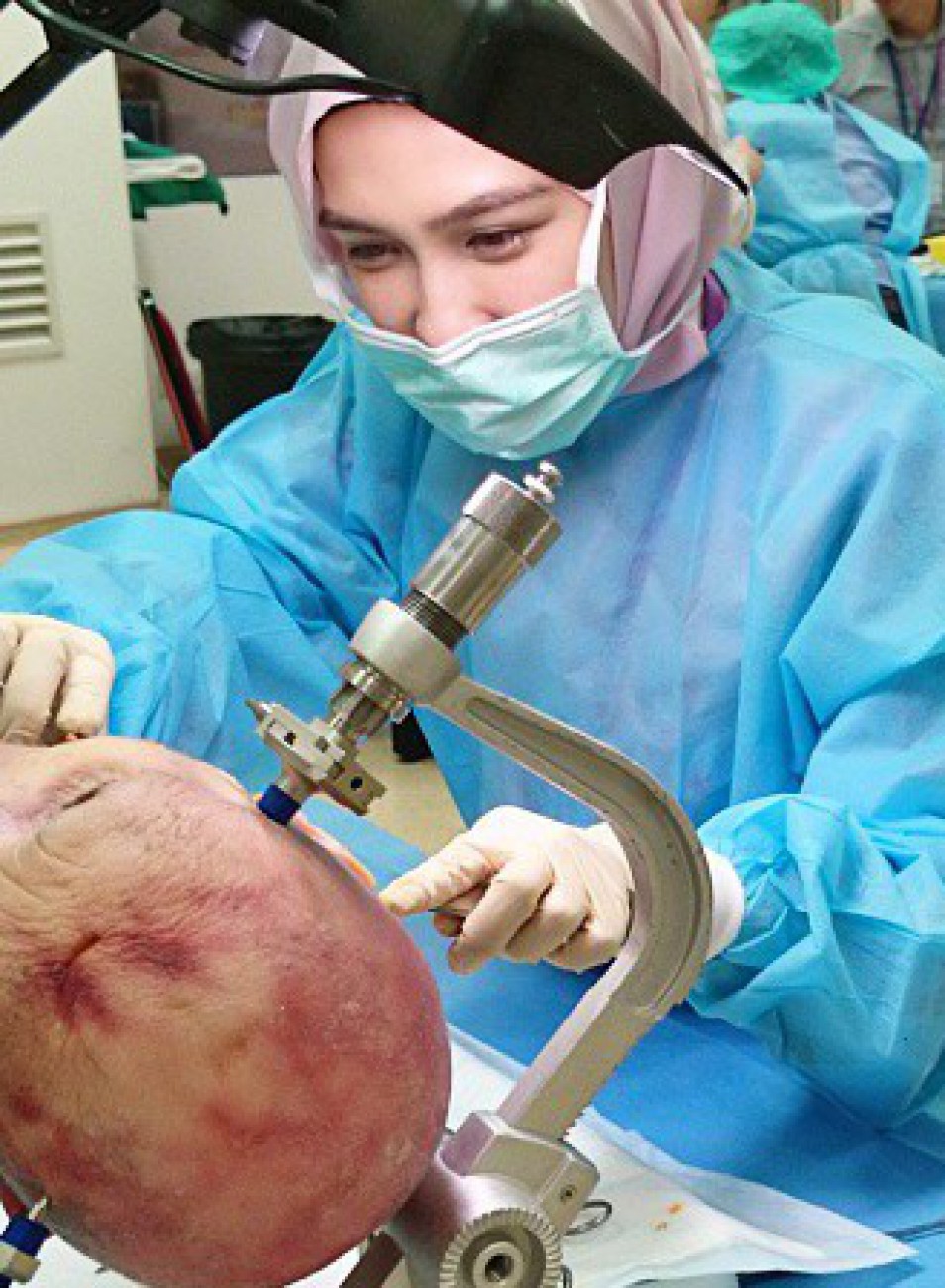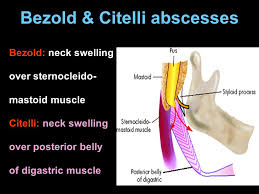Uncategorized
NECROTIZING OTITIS EXTERNA
1.NECROTIZING OTITIS EXTERNA ( Short note 2003)
A.k.a: Malignant Otitis Externa
DEFINITION:
Rare complication of Otitis Externa
Severe infection of temporal and adjacent bone
May lead to osteomyelitis of temporal bone and skull base
Commonly caused by Pseudomonas aeruginosa
Typically seen in immunocompromised and DM patients
COHEN DIAGNOSTIC CRITERIA:
| MAJOR:
|
MINOR:
|
| A- MicroAbscess | A – Age (elderly) |
| B- Bone scan positive | B – Bacterial culture (pseudomonas – 98%) |
| C- Cruciating pain | C – Cranial nerve palsy |
| D- Discharge | D – DM/ debilitating illness |
| E- Edema | E – ESR raised |
| G- Granulation tissue | |
| F- Failed medical therapy |
DIAGNOSIS:
Lab: ESR, swab c&s, HPE of granulation tissue, TWC, Glucose, Creatinine level
Imaging:
CT scan – to exclude temporal bone SCC. Findings: soft tissue enhancement in EAC +/- abscess
Technetium 99 – for diagnosis (absorbed by osteoclast and osteoblast)
Galium 67 – for prognosis (absorbed by macrophages)
TREATMENT:
Medical – IV abx (anti-pseudomonal): Ciprofloxacin 1/12, sugar control, pain control, ear toileting
Surgical – mastoidectomy + debridement of granulation tissue
Neck mass – long case / short case
History:
- Site
- Duration
- Onset
- Progress
- Pain
- Secondary changes – ulceration/ discharge
- Aggravating factor
- Relieving factor
- Assoc symtoms: Dyspnea/ Dysphagia/ Trismus / Change of voice
- Fever
- URTI hx
- LOA / LOW
- H/o Trauma
- Any other swelling elsewhere
- Similar hx in the past
Examination:
Inspection:
- Number
- Site
- Size
- Shape
- Surface
- Edge
- Skin changes – colour / ulcer / punctum/ discharge/ necrotic patch
- Scar – transcervical / schobinger/ modified blair
- Trachea deviation
- Pulsatile
- Movement on deglutition
- Movement on protrusion of tongue
Palpation:
- Local rise of temperature
- Tenderness
- Confirm inspector findings – number / site/ size/ shape/ surface
- Consistency
- Mobility
- Fixity to overlying skin
- Pulsation – expansile/ transmitted


Relative Prevalence of Neck Mass Etiologies
| Type | Common | Uncommon | Rare |
|---|---|---|---|
|
|
|
— |
|
|
|
|
|
|
|
|
Reference:








